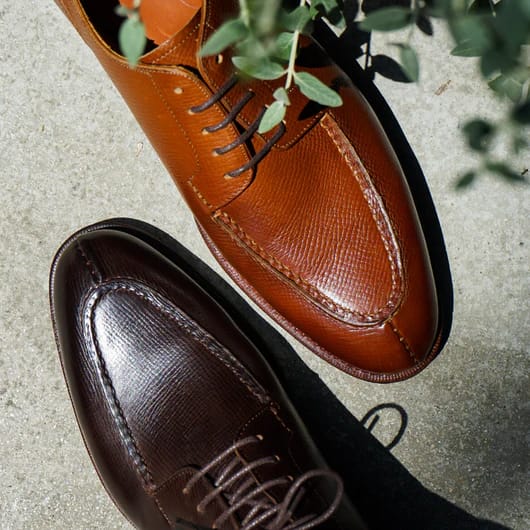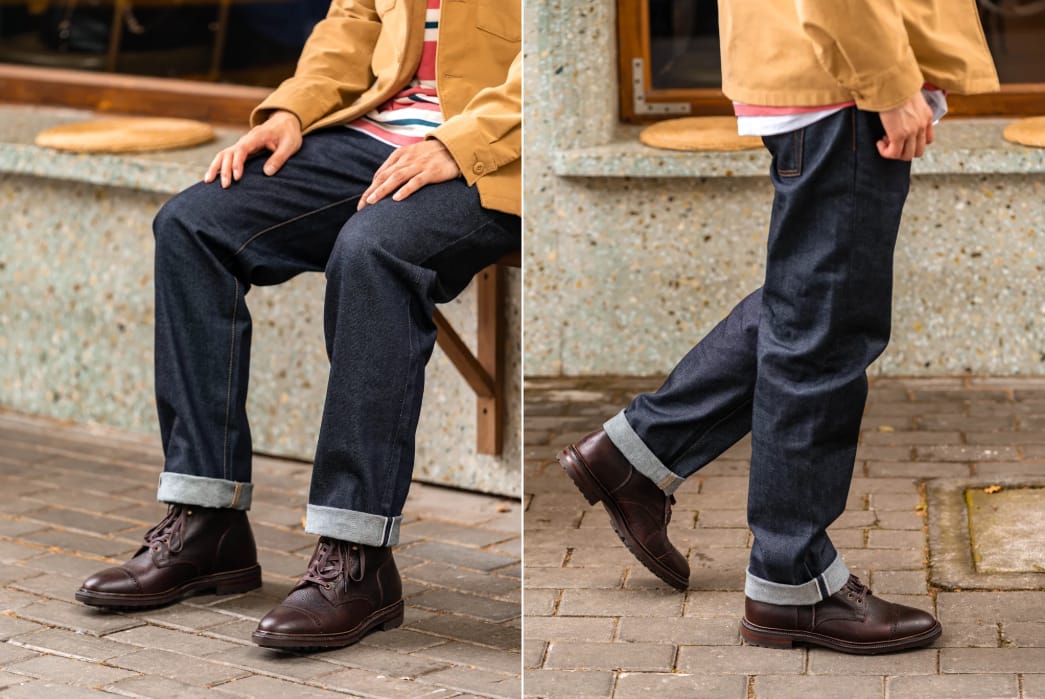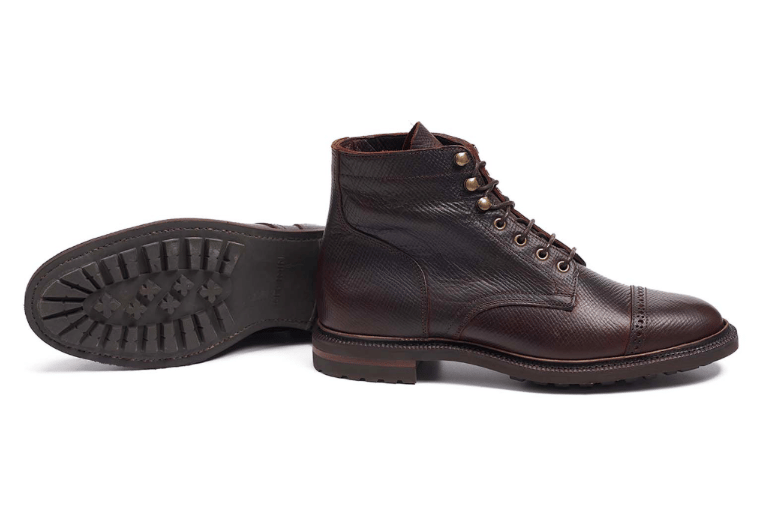- Heddels
- Posts
- Nov 17 - The Mill That Invented Synthetic Fleece - Meermin
Nov 17 - The Mill That Invented Synthetic Fleece - Meermin
Together With
The Mill That Invented Synthetic Fleece
We take a closer look at Malden Mills, the American textile that rolled the dice on synthetics and came up with synthetic fleece.
Albert Muzquiz

The factory was very fine;
He wished it all the modern speed.
Yet, after all, ‘twas not divine,
That is to say, ‘twas not a church.
So said Robert Frost in his 1936 poem, “A Lone Striker”, of the factory that in 1956 would become Malden Mills and the future birthplace of that miracle fabric, synthetic fleece. Fleece is something that is now so successful and ubiquitous that we’ve come to take it for granted, but in 1999, Time Magazine named it one of the 100 most important inventions of the 20th century. High praise for that fuzzy fabric favored by outdoor enthusiasts and fashionistas alike.
Today, we’re talking fleece. No, not the natural kind born from sheep, but the manmade synthetic that you can find in many Patagonia pieces. So join us on a journey through the history of this relatively new synthetic.
Wool Beginnings

Malden Mills. Image via Lussier Photography.
The modern wool substitute was born in a mill that, for nearly 80 years, had been expertly milling the original wool fleece since 1906. Malden Mills was founded by Henry Feuerstein, a Hungarian immigrant, who, after middling success in apparel, blew the last of his fortune ($50,000 at the time) on a mill in Malden, Massachusetts, in a Hail Mary move that really paid off.
Feuerstein began by producing wool workman’s sweaters and bathing suits. If you needed any impetus to create a modern synthetic with all the good properties of wool without the bad, having to wear a wool bathing suit would probably suffice. It sounds silly (and deeply uncomfortable) to a modern audience, but wool was the de facto performance textile of its day. Wool doesn’t break down in water and, to a certain extent, wicks away sweat and moisture. That’s why, despite its weight and itchiness, it was used in most athletic garments.

Men’s wool swimsuits. Image via Gentleman’s Gazette.
By the 1950s, Malden had established a reputation for excellence in quality and R&D. The vertical integration in their factories allowed them to dye, print, and finish in-house. This gave them greater power to innovate and advance their products. Their expertise had been called upon by the U.S. Army, being contracted to outfit soldiers in wool knits during both World Wars.
Post-war stability and a boom in synthetics made Malden want in on the action. DuPont had created nylon in the 1930s, spandex was currently in development, and Feuerstein sensed that the market was about to profoundly change.
All leather boots grow in texture as you wear them, but some are imbued with additional grain or character off the bat. Falling into this category is Meermin's 514667 Cap Toe Boot, which has been rendered in a crossboard edition of C.F. Stead‘s oiled shoulder leather.
What’s Crossboard, you ask? Well, it’s a form of crossgrain leather, which is basically where a texture is imprinted onto the hide as the leather is tanned. As well as adding instant visual appeal, this treatment is typically paired with a gloss or oil coating that provides water resistance, an effect bolstered by the little debossed channels created by the geometric imprint. In this instance, C.F. Stead has imprinted a ‘crossboard’ imprint onto their oiled shoulder leather in a rich brown ‘polo’ brown, making this edition of Meermin’s 514667 Cap Toe boot a compelling option for your fall/winter footwear arsenal.
Available at Meermin for $280.
Synthetic Fabric Boom

Faux Fur by Malden. Image via eBay.
Henry Feuerstein’s grandson, Aaron, had by this time taken over. He would usher in an era of profound change for his family’s company, but not without a fair share of missteps along the way. In 1962, the company opened a knitting factory in Maine, which bucked the national trend of moving manufacturing jobs south and west, where real estate was cheaper. Aaron chose to prioritize proximity to Boston, where he would have access to a more experienced and scientifically inclined workforce.

Malden Mills Polar Fleece. Image via Trademarkia.
Aaron’s first big gamble was on synthetic fur. With a new generation of fur activists, Aaron assumed that people would need an ethical alternative to the mink coats that had been so popular in the 1930s and 40s. Malden dominated the faux fur market, but the demand turned out to be far less than he had anticipated. Bankruptcy loomed, employees were laid off en masse, but then salvation came.

Synchilla. Image via Gear Patrol.
The answer to Malden’s problems was synthetic fleece. The breakthrough came in 1979 and was almost immediately snatched up by Patagonia, who used the warm, light fabric in its iconic Snap-T fleece pullovers. The 100% polyester fabric could draw away moisture from the body, cut wind, and keep you warm all at once. It was a natural choice for outdoor brands, and by 1983, Malden was out of the dire straits.
Synthetic Fleece Properties
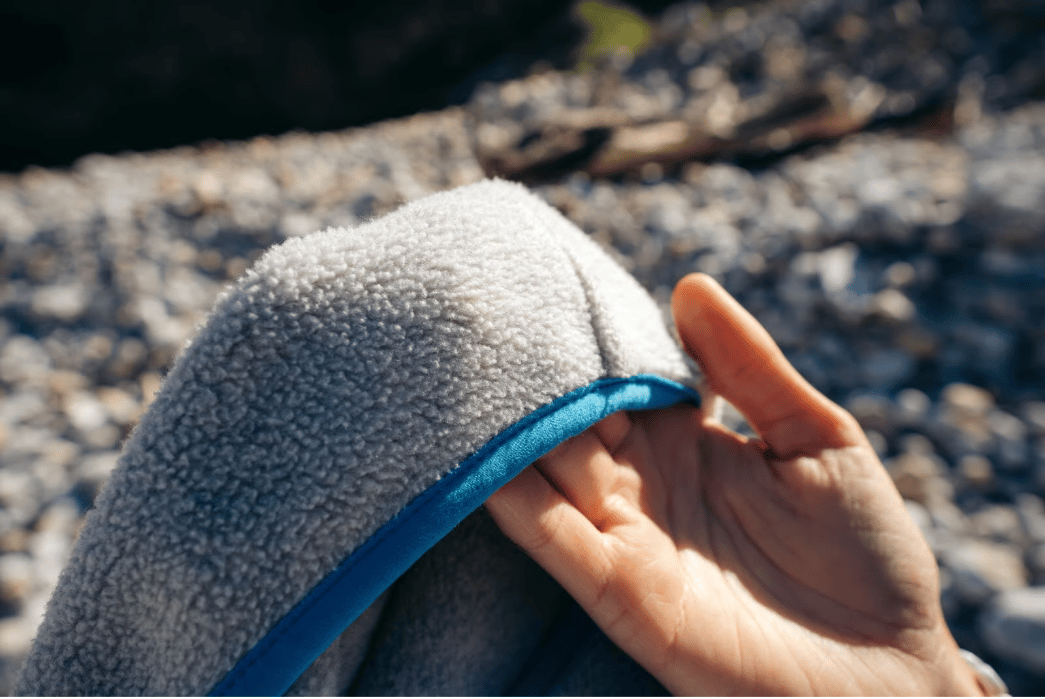
Image via Better Trail
Rather than growing the fabric naturally, synthetic fleece can only be made with polyester, a plastic that is made by a chemical reaction from petroleum and petroleum derivatives. This material is heated into a thick syrup that, upon hardening, can be spun into threads to be woven into fabric. By brushing the woven material, the fibers break down and develop piles that resemble the piles of natural shearling. The result is a warm, water-resistant, and very soft fabric.
Artificial fleece was nothing short of a textile miracle, and Malden can take the credit. Polyester absorbs less water/ body odors and has better insulation properties than standard wool, its nearest organic competitor. Many enthusiasts argue that Merino wool is superior to synthetic fleece, but there is no denying that synthetic fleece is much cheaper, and less salient animal rights issues in its production.

Image via Better Trail.
Wool is water-resistant, to a point, but then it starts to soak up moisture, which makes it even heavier and more unwieldy. Once it does take on moisture, wool also tends to smell. It is made from animal hair, after all. In light of this, one of synthetic fleece’s biggest strengths is how easy it is to care for. Wool garments can sometimes be tricky to launder and can’t always be thrown in the washing machine, but fleece doesn’t need to go to the cleaners when it’s dirty. It doesn’t need babying at all.
Since its invention, fleece has changed and advanced. Some fibers are even finer now, almost like cashmere, and today’s versions are even more resistant to wind and water. It’s now possible to make fleece from recycled plastics, which was a deeply flawed process in the beginning, but now costs about the same to make as brand-new fleece.
Goldwin POLARTEC High Loft Fleece Neck Warmer, available for $66 from Lost & Found.
Environmental Concerns
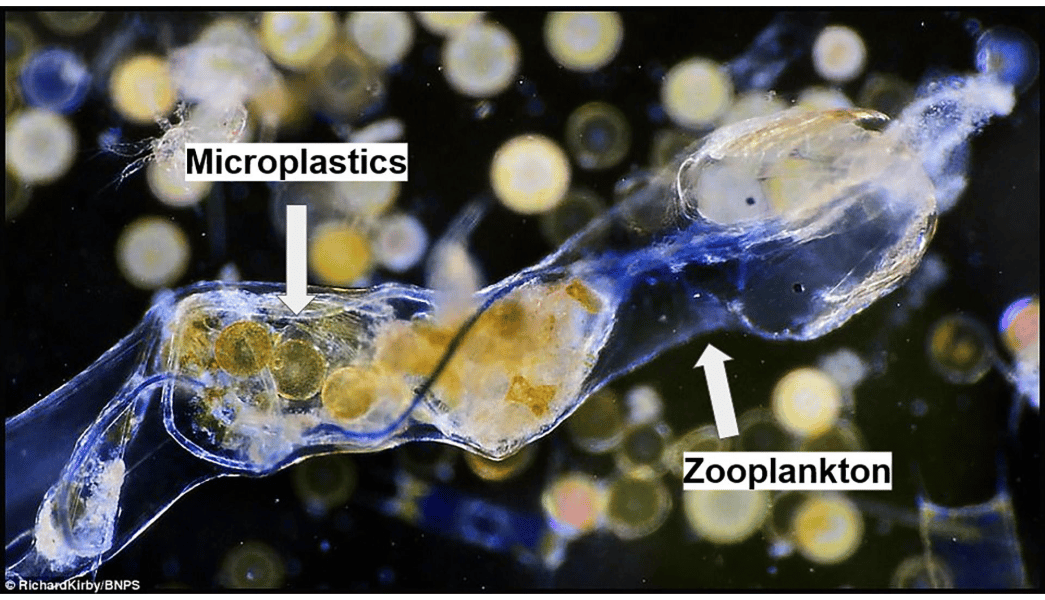
Sadly, most fabrics have their drawbacks, and the thorn in the side of artificial fleece is its ecological validity. While synthetic fleece can be made from recycled plastics, the sticking point is that plastics of any kind will not biodegrade for up to 200 years, releasing chemicals into the earth during their long stay in a landfill. Circular economies can minimize this impact when it comes to synthetic fleece garb, but it is something that should certainly be considered. And while synthetic fleece is easier to launder, doing so makes the fabric shed microplastics into our waterways, causing environmental damage.
Fleece Today

Image via The Verge.
Fleece is everywhere now. Its comfort and versatility made it a must-have fabric for all kinds of non-REI people. In fact, the place you’re most likely to encounter fleece these days is probably your couch, perhaps in Snuggie form, but surely in the blankets you swaddle yourself in when it’s time to chill out.
Malden Mills has since rebranded to Polartec, which continues the legacy. The great invention of the 20th century shows no sign of slowing down, and depending on your lifestyle, you probably encounter synthetic fleece more than the wool that inspired its creation. Malden never patented their invention, so now makers the world over can get in on the synthetic goodness, but for the originators, go back to Polartec, whose efforts to improve their creation have never ceased, and who are devoted to keeping you warm and dry in all conditions, whether couch-bound or mid mountain-climb.
HAVEN Guide Jacket – Polartec® High Loft™, available for $335 from HAVEN.
Like this? Check out Our Blowout Podcast
What did you think of today's newsletter? |
